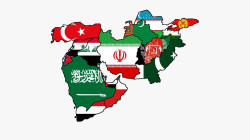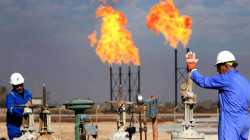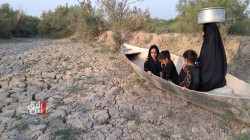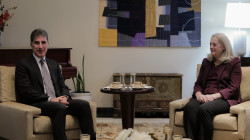Earthquake threat strikes the Middle East
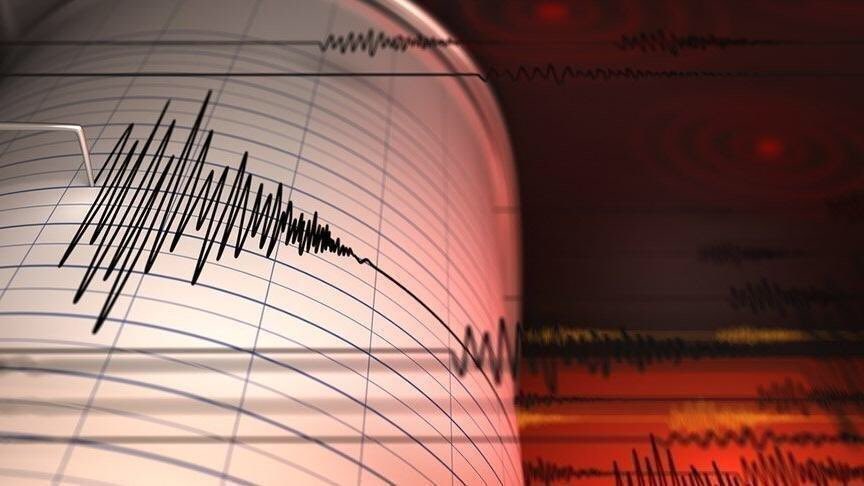
Shafaq News / In light of the devastating earthquake that struck Morocco last Friday, claiming the lives of three thousand people, a report has identified the Arab countries at risk of earthquakes. This event has heightened widespread concerns among the peoples of the Arab region about a similar threat that could affect their countries. It is particularly worrisome since the Morocco earthquake occurred just months after the February 6th earthquake that hit Turkey and Syria, resulting in a tragic loss of life. This reflects a notable increase in seismic activity in the Middle East region as a whole.
Given these circumstances, several questions arise, primarily related to the Arab countries most vulnerable to seismic activity due to their geographical location and historical seismic records. Additionally, there is a need to assess the level of proactive preparedness within these countries to mitigate the risks and effects of earthquakes, considering the significant human and material costs associated with violent seismic disasters, as reported by Sky News Arabia.
Seismic Belt:
Geologically, several countries in the Arab region are situated within or along the borders of three major seismic belts: The Asian-European Seismic Belt; originating from the Himalayan Mountains in Asia, this mountain range separates the Indian subcontinent plains from the Tibetan Plateau. It then traverses through Iran, Iraq, and Pakistan before extending into the European continent.
The Arab-African Seismic Belt: This belt extends across the Mediterranean Sea, passing through the coasts of Turkey, Lebanon, Syria, Jordan, and reaching Egypt. It may also extend into the countries of the Arab Maghreb.
The East African Rift System: Extending from Lebanon, Syria, Palestine, and Jordan, this belt reaches the mountain ranges west of the Red Sea and continues to Ethiopia, including Addis Ababa.
Arab countries in peril:
According to Abdullah Mohammed Al-Omari, head of the Saudi Geological Survey and supervisor of the Center for Seismological Studies, there is not a single Arab country that is entirely immune to seismic threats within the Arab world. He highlighted that tectonic plates are intermittently active, leading to earthquakes of varying magnitudes.
Tectonic plates constitute the Earth's outer layer, known as the lithosphere, which includes the crust and the solid upper mantle.
These plates move slowly within the Earth's lithosphere, shifting between 2 cm to 15 cm annually. This movement is accompanied by seismic and volcanic activity, as well as the formation of topographical features such as faults, mountains, rifts, and more, a process that can take millions of years. There are nine major continental-sized plates, along with several smaller secondary plates.
Al-Omari explained that the Arabian Plate is bordered by five tectonic boundaries. The Arabian Plate collides with the Eurasian Plate, resulting in earthquakes in Iran. Furthermore, the Arabian Plate encounters the Eurasian Plate from the north, occasionally causing earthquakes in Iraq.
He added, "The Arabian Plate also collides with the Eurasian and African plates, resulting in earthquakes in Turkey, as witnessed in the recent February earthquake."
Heading westward, the African Plate's seismic activity increases from Algeria westward, experiencing various earthquakes such as the ones in Algeria in 1980 and the Agadir earthquake in 1960, among others throughout history. Although earthquakes in this region are infrequent, when they do occur, they tend to be catastrophic, as seen in the aforementioned earthquakes and the recent one.
As for the Suez Gulf region, it experiences fewer earthquakes compared to the Gulf of Aqaba, notably because the Gulf of Aqaba connects the Dead Sea to the Red Sea.
Moving southward, we encounter the Gulf of Aden, where three seismic arms converge, making it a zone of seismic significance.
Moderate seismic risk:
The supervisor of the Center for Seismological Studies and the President of the Saudi Geological Society clarified that seismic risk in the Arab region is of "moderate frequency." However, its impacts are often severe due to the lack of comprehensive preparedness in the Arab world for such disasters and the inadequate handling of seismic risk.
Given the absence of earthquake awareness within society, coupled with the lack of building codes in many Arab countries that do not meticulously consider seismic safety measures, he emphasizes that there is not a strict enough enforcement of building codes in Arab nations compared to European countries and the United States to mitigate seismic risk.
He continued, "There is not enough rigor in the implementation of building codes in Arab countries, unlike in European countries and the United States, to reduce seismic risk. Simultaneously, he called for the necessity of organizing annual conferences and workshops related to seismic risk reduction. These gatherings should produce specific recommendations regarding information exchange and the development of unified seismic maps, rather than each Arab country working independently, which could result in a lack of data and information."
The Arabian Plate:
According to the Saudi Geological Survey, the "Arabian Plate" is one of the tectonic plates that make up the Earth's crust. It moves in a northeastward direction due to the subduction of material from the Earth's interior along the Red Sea Rift, which widens by approximately 15 millimeters annually. This movement leads to the occurrence of numerous earthquakes along its boundaries with adjacent plates. These seismic activities are also evident along its eastern and northeastern edges, forming the Zagros Mountains in Iran and along its northern boundaries in Turkey.
The Arabian Plate represents a geographic region extending across parts of the Middle East and North Africa. It stretches from the Mediterranean Sea region to the Arabian Gulf, and from northern Turkey to southern Sudan.
This region is one of the most seismically active areas globally, primarily due to the collision between the Arabian Plate, the Indian Plate, and the African Plate. The seismic system within the Arabian Plate is complex and can generate significant and destructive earthquakes.
The Earthquake map:
Abbas Sharaqi, a professor of geology and water resources in Cairo, delineates the seismic activity status of several Arab countries on the earthquake map. These countries are linked to fault lines and tectonic plate boundaries, as follows:
Syria: Syria stands out among Arab countries for its seismic activity, primarily due to its proximity to Turkey, which follows Indonesia and Japan in terms of seismic activity. Turkey is located near major fault lines, and Syria is significantly affected by this due to its proximity.
Morocco: Morocco is another country that falls within the earthquake map, especially because it lies along the Mediterranean Sea, where there are convergent boundaries between the African and Eurasian plates.
Most earthquakes there occur along the coasts. Additionally, Morocco has significant fault lines, and the Atlas Mountains fold and extend across the country. There was a major earthquake along the same fault line in Agadir in 1960 with a magnitude of 6.8. The recent earthquake also originated along the same fault but was about 100 kilometers away from Agadir and Marrakech.
Other Arab Countries: Other Arab countries that can be considered more susceptible to seismic activity include Yemen, Djibouti, and Somalia in the Gulf of Aden region, which experiences a lower degree of seismic activity compared to Morocco.
Egypt, Lebanon, Syria, Palestine, and Jordan: These countries are part of the seismic belt due to the presence of the Gulf of Aqaba, the Suez Canal, and the Red Sea. The Gulf of Aqaba and the Suez region are particularly active in this context.
Egypt and Jordan: Cities such as Sharm El Sheikh and Hurghada in Egypt, the Dead Sea region in Jordan, Lebanon, Palestine, and Syria are also vulnerable due to their locations along the Great African Rift.
Sharaqi emphasized that earthquakes can happen anywhere, but about 90% of them typically occur in areas where tectonic plates or fault lines intersect. He added that in addition to the countries mentioned, Egypt, Libya, Algeria, and Tunisia are also more susceptible to seismic activity due to their location along the Mediterranean Sea, at the boundary between Europe and Africa. This boundary cuts through Morocco itself, unlike the situation for Egypt, which is about 700 kilometers away from its shores.
Gulf States:
Regarding the Gulf states, a professor of geology and water resources in Cairo noted that due to their relative proximity to Iran, a seismically active country, they are influenced by seismic activity. The situation is similar to that of Lebanon, Palestine, and Jordan along the Dead Sea.
Iran:
Iran is one of the most earthquake-prone countries in the world, with a history of devastating earthquakes, including the catastrophic event in 1990 that claimed over 40,000 lives.
It is important to mention that faults are fractures or cracks in rocks within the Earth's crust resulting from the relative movement of adjacent blocks of rock on either side. This movement can be vertical (up and down) or horizontal (side to side) and is often the result of pressures and forces acting on the Earth's crust due to tectonic plate movements and other geological factors.
Historical earthquake records:
On the other hand, the director of the Jordanian Seismological Observatory, Ghassan Swaydan, identified key Arab countries at potential risk of earthquakes based on historical earthquake records. These records are crucial for estimating earthquake risks, and the countries in question are Iraq, Syria, Lebanon, Palestine, Jordan, Yemen, Egypt, and Algeria.
Regarding the Gulf Arab states, Swaydan explained that the eastern regions there may be the most vulnerable to earthquakes due to their proximity to the eastern boundaries of the Arabian Plate.
The director of the Jordanian Seismological Observatory also outlined measures for earthquake preparedness, including:
Establishing joint scientific research centers (among Arab countries) and exchanging expertise.
Supporting scientific research in seismology and natural hazard studies.
Activating earthquake-resistant building codes:
One crucial step is to activate earthquake-resistant building codes. This involves allocating government support to individuals in the community to reconstruct their buildings based on scientifically engineered earthquake-resistant principles.
According to data from the British Geological Institute and the US Geological Survey, most earthquakes occur within three major belts, with the most prominent being the "Ring of Fire" along the Pacific Ocean's edge. This region experiences over 80% of earthquakes due to continuous tectonic plate movement in the area.
Based on this data, the Arab region has seen a concerning increase in seismic activity over the past decade, with many countries reporting an uptick in earthquake occurrences felt by their populations.
Studies indicate that nearly 30 million people in the Arab region, equivalent to one-fifth of the Arab population in the Middle East and North Africa, are at risk of increased likelihood of destructive earthquakes in the future.
Preparedness measures:
Given the geographical factors and the seismic activity history in the region, the importance of proactive measures in Arab countries to mitigate earthquake risks becomes evident. This involves adopting building codes that prioritize safety and security standards to reduce risks and losses. It also encompasses preparations related to disaster response through pre-training and cooperative plans among all relevant entities.
This viewpoint is emphasized by the Professor of Seismology at the University of Jordan, Najib Abu Kirk. He highlighted that disaster preparedness measures vary from one country to another. Effective training and the development of pre-established response plans are essential for both reducing losses and responding to disasters when they occur.
In the context of earthquake risk reduction and disaster preparedness, it is essential for each Arab country to have a dedicated entity or department supported by necessary legislation. This entity would take responsibility for proactive measures and disaster response.
Additionally, there should be an overarching Arab-level administration concerned with natural disaster management, coordinated through a body affiliated with the Arab League. This body can participate in rescue missions and more when needed, involving hundreds of volunteers or employees, operating under clear regulations. This approach can enhance Arab unity and solidarity in disaster management.
He further emphasized that natural disasters like earthquakes cannot be stopped or predicted quickly. Therefore, the focus should be on specific preparedness measures, including rational and well-thought-out construction methods supported by relevant laws.
Additionally, enhancing rescue capabilities, debris removal, and rapid response are crucial aspects. He cited Jordan as an example, where an upcoming exercise involving all ministries will assess earthquake preparedness and response capabilities. This exercise was planned months in advance to examine the readiness of these institutions.
